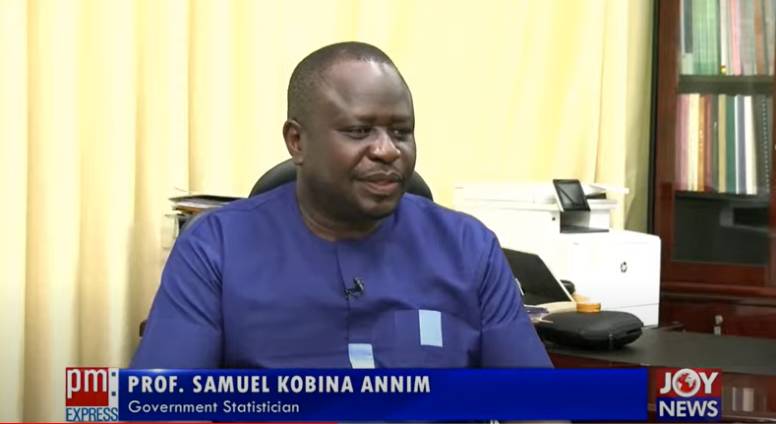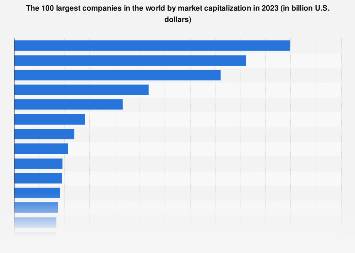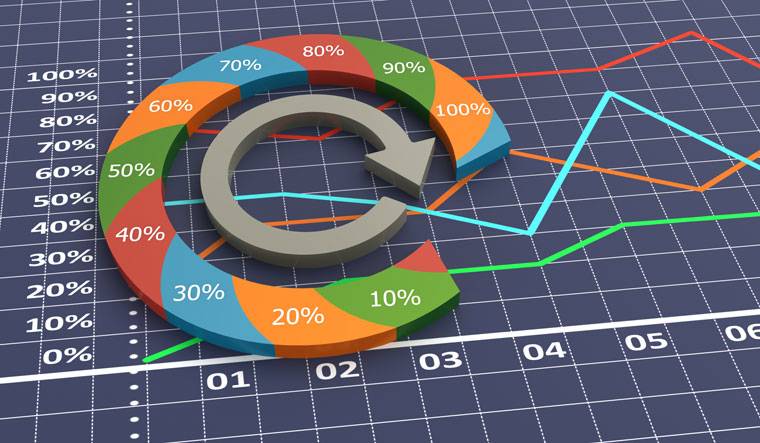According to Government Statistician Professor Samuel Kobina Annim, the current statistics on the country's inflation rate issued by the Ghana Statistical Service are not intended to be educational for policymakers.
According to him, the purpose of the study is to assist policymakers in identifying the origins of the variables driving the country's inflation rate and in developing informed policy.
Speaking on JoyNews' PM Express Business Edition, the Statistician advocated for a larger discussion on how the Statistics Service's statistics might affect monetary policy and, as a result, lower Ghana's inflation.
"So now we're informing policymakers that formerly, locally produced things had a greater inflation rate than imported items, but now we're seeing imported inflation at 24.7 per cent and locally produced at 20.0 per cent," he added. This is not to advise policymakers to prioritize imported things above locally produced items, because I have already mentioned that if you disaggregate the 99 items with rates greater than the national average, two-fifths of the 99 are locally produced food items.
"So I'm saying, let's get the real sector ministry to look at our grain stock, and once we look at our grain stock, we'll know that there's a possibility of fixing two-fifths of the 99 problems."
According to the most recent Statistical Service data, rising food costs increased inflation to 23.6 per cent in April 2022.
This is the highest reading since January of 2004.
According to the GSS, four divisions – Transport (33.5 per cent); Household Equipment and Routine Maintenance (28.5 per cent); Food and Non-Alcoholic Beverages (25.6 per cent); and Housing, Water, Electricity, Gas, and Other Fuels (25.0 per cent) – had inflation rates higher than the national average of 23.6 per cent.
From March 2022 to April 2022, national month-on-month inflation was 5.1 per cent.
Non-food inflation was 21.3 per cent, while food and non-alcoholic beverages inflation was 26.6 per cent. April 2022 food inflation (26.6%) is greater than both March 2022 food inflation (22.4%) and the prior 12-month average (13.5 percent ). However, the percentage of food inflation to overall inflation fell from 51.4 percent in March 2022 to 50.0 percent in April 2022.
All 15 food subcategories had positive month-on-month inflation, with Fruit and Vegetable Juices seeing the greatest (15.3 percent ).
Non-Food inflation increased year on year on average in April 2022 compared to March 2022. (from 17.0 percent to 21.3 percent ). Only one of the 12 Non-food Divisions had a rolling 12-month average that was greater than the division's year-on-year inflation for April 2022.
Furthermore, the inflation rate for imported products was 24.7 percent, up from 17.3 percent in March 2022, while the inflation rate for locally manufactured items was 23.0 percent, up from 20.0 percent in March 2022. This is the first time in 29 months that import inflation has outpaced domestic inflation.
Professor Samuel Kobina Anim, the Government Statistician, has urged policymakers to address the country's growing pricing for goods and services.
"So there should be more discussion to see the weight to which monetary policy will solve it, the pathways by which monetary policy will solve it, and the extent to which we can identify the real sectors, such as transportation, housing, and food, which are all recording rates higher than the national average."
 blogpay
blogpay


























